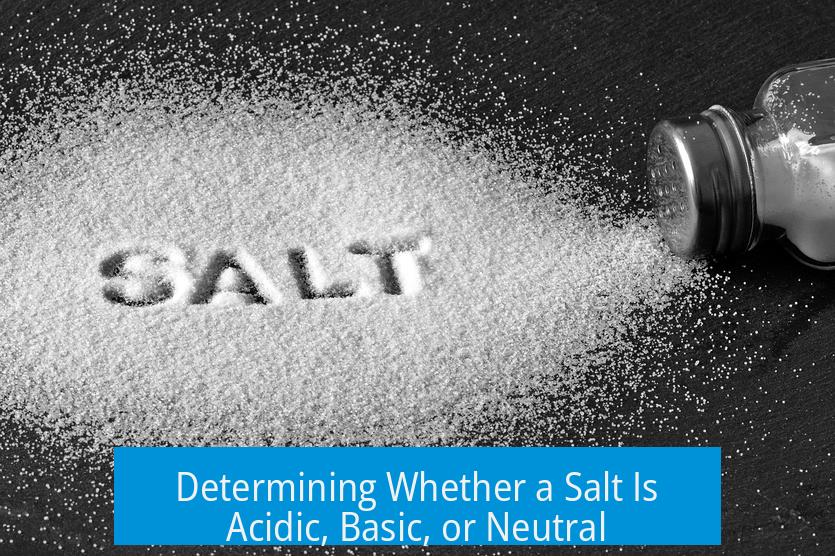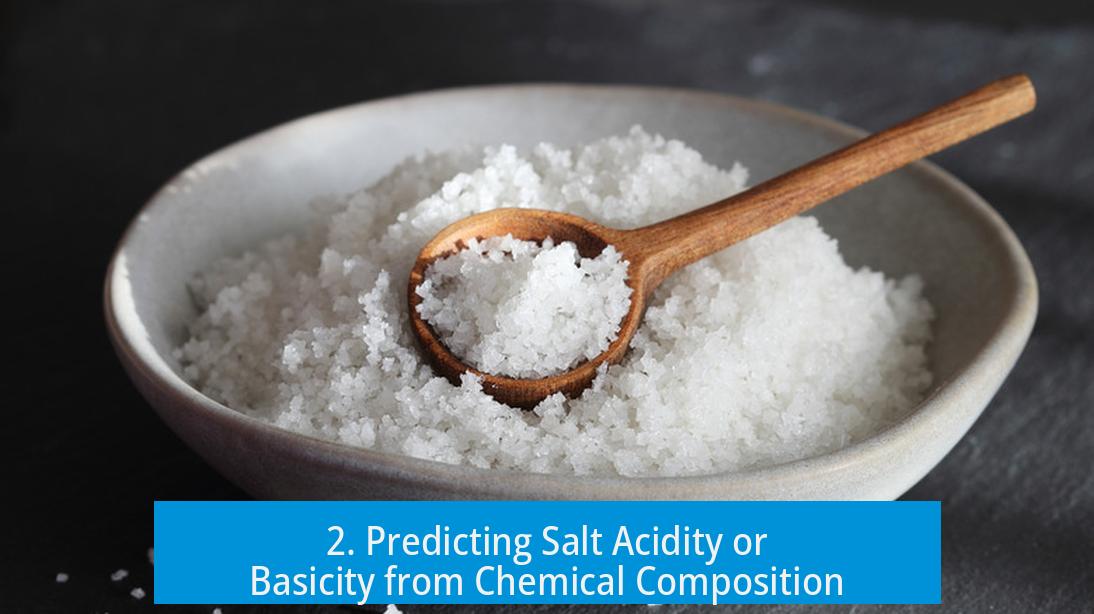Determining Whether a Salt Is Acidic, Basic, or Neutral

The primary way to determine if a salt is acidic, basic, or neutral is by dissolving it in water and measuring the pH of the solution. This direct measurement reflects the salt’s effect on the concentration of hydrogen (H+) and hydroxide ions (OH−) in water.
1. Measuring pH in Solution
When a salt dissolves, it dissociates into ions. Measuring the pH of this aqueous solution is the simplest, most reliable method.
- pH < 7: solution is acidic, indicating the salt releases ions that increase H+ concentration.
- pH > 7: solution is basic, reflecting an excess of OH− ions.
- pH = 7: solution is neutral, with balanced concentrations of H+ and OH−.
2. Predicting Salt Acidity or Basicity from Chemical Composition

Without experimentation, predicting if a salt is acidic, basic, or neutral requires knowledge of the acid-base strength of its parent acid and base.
Salts formed from a strong acid and strong base usually produce neutral solutions. Those derived from a strong acid and weak base tend to be acidic. Conversely, salts from a weak acid and strong base often yield basic solutions.
3. Stoichiometry of Acid-Base Reactions
Neutral salts form when acid and base react in exact stoichiometric amounts, fully neutralizing each other.
If either component is in excess, the resulting solution shifts:
- Excess acid leads to an acidic salt solution.
- Excess base results in a basic salt solution.
4. Ion Hydrolysis and Its Effect on pH
After dissolution, ions from the salt may hydrolyze by reacting with water, altering pH:
- Anions from weak acids can consume H+, raising pH (basic salt).
- Cations from weak bases can release H+, lowering pH (acidic salt).
- Ions from strong acids or bases do not hydrolyze significantly, keeping pH neutral.
Summary of Key Points
- Dissolve salt in water and measure pH to determine acidity or basicity.
- Strong acid + strong base salts are typically neutral.
- Imbalances in acid-base stoichiometry affect solution pH.
- Ion hydrolysis influences whether solution is acidic or basic.
- Relative concentrations of H+ and OH− ions dictate pH outcome.





Leave a Comment